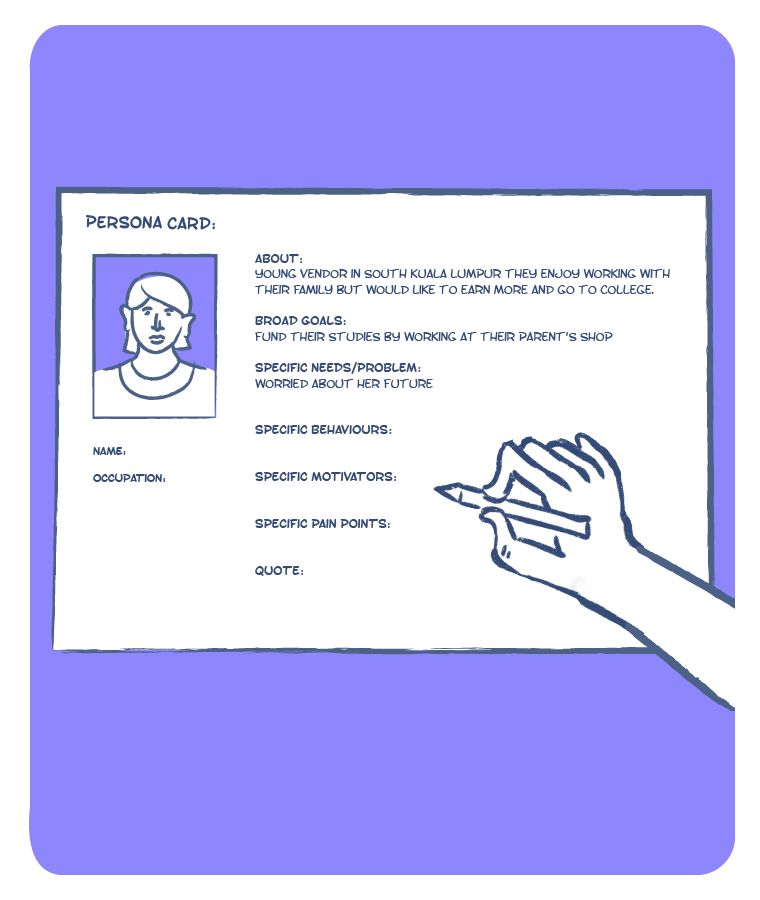HUMAN CENTERED DESIGN | DEFINE
Persona
30+ Min
Personas are one of the most important tools within the world of human centered design. They are fictional ‘characters’ that represent a type of user or stakeholder for whom a solution has to be developed. A Persona is not a single demographic segment of users, but instead an archetype of a certain type of need, behaviour, and motivation, that may represent multiple people across demographic segments. Instead of designing for broad, anonymous segments, Personas help focus on real people and needs.
USE CASES
- Document critical needs, behaviours and motivations of target users and stakeholders.
- Humanise target users and stakeholders as representative profiles.
LIMITATIONS
The quality of a Persona is dependent on a team's understanding of user needs, behaviours and motivations. There may be some struggle with regard to prioritising what to build since there is no way of quantifying the number of users represented by a Persona.

